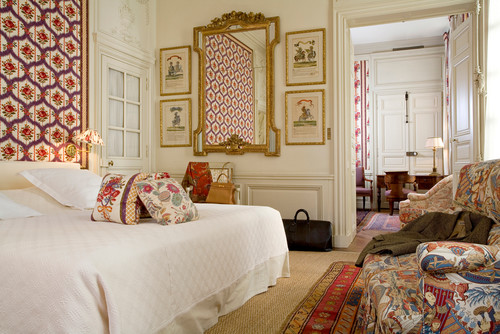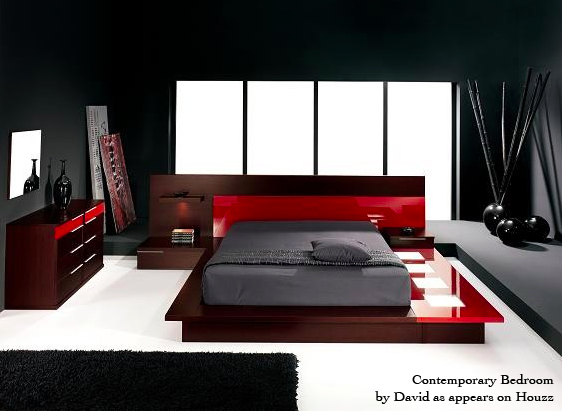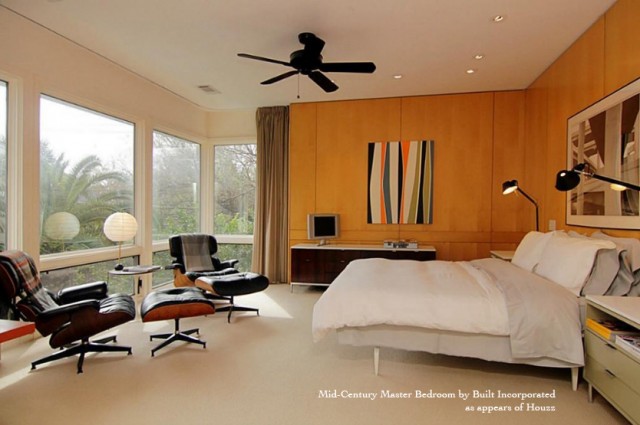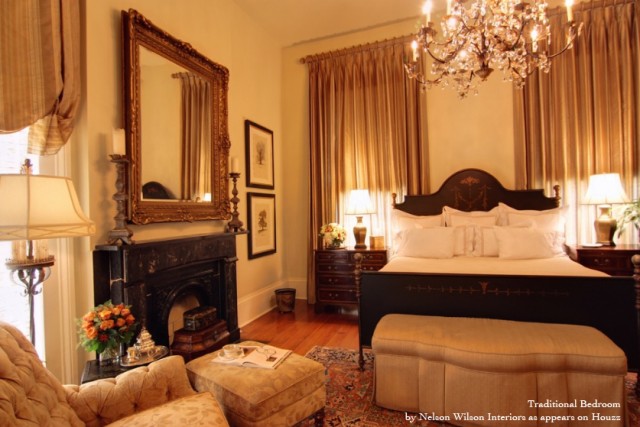Tag Archives: Traditional Bedrooms
Bedroom Design: The Best of Traditional Bedrooms
Post by Tracy Kaler.
The traditional style includes myriad looks. From French Country to Chippendale, to Neoclassic and an eclectic mix of periods, traditional bedrooms can be soothing and comfortable, or fancy and posh. Wing chairs, silk draperies, canopy beds, and dust ruffles all come to mind when we think about the traditional interior. But in today’s design world, the term ‘traditional’ can mean so much more.
Since decorating styles within the traditional genre run the gamut, today we’ll take a look at some lovely yet very different traditional sleep spaces, each well designed with its own unique character.
Clean and simple, this casual guest room leans toward the traditional but boasts an up-to-date look. The linear elements in the walls, windows, and bedding are essential in the design theme.
This Charleston Bedroom is brimming with bold color, yet has a relaxed feel. The designer successfully mixed pattern, but I have a feeling that she intentionally chose solid walls and bedding.
One can’t help but feel romantic in this chic Atlanta master bedroom with its serene color scheme, generous space, and perfect scale. Its classic layout, tall windows, and dark hardwoods add to the ambiance.
Charming and sweet, this shabby-chic farmhouse bedroom invites and calms. This space would make a wonderful guest room.
A San Francisco-area retreat, this bedroom remains neutral for the most part but adds interest with birds-eye maple bedside lamps and tone-on-tone patterns. Fresh flowers breathe life and add a pop of color to the space.
Bedroom Design: Contemporary vs. Modern vs. Traditional Design
Post by Kyle St. Romain.
While most people have a general idea of the way they want their bedroom to look, many use the wrong words when trying to describe this vision to other people. While minor differences in terminology go mostly unnoticed when talking amongst friends, the same words carry distinctly different meanings to professionals in the design community. To help you nail down the terminology, we’re going to discuss contemporary, modern, and traditional design and the main differences between each.
Contemporary Design
Contemporary design, also called transitional design, can be described as a mix of modern and traditional design. Unlike modern design, which describes a specific style from a particular era, contemporary design embodies what is “in” today. Indeed, the word contemporary means “with the time, “or “modern, characteristic of the present.” Contemporary can even be further described in terms of its geography. Thus, today’s contemporary design in California may be very different from today’s contemporary design in New York.
Some of the cornerstone elements found in contemporary design today include shiny, reflective surfaces like glass and stainless steel. Contemporary furniture is a bit bulkier and more rounded than modern furniture, but is more minimalistic than traditional furniture. Contemporary design often features very artistic lighting fixtures, which are commonly used as the statement piece in a room.
Modern Design
Modern and contemporary design are often confused and while they are similar, modern design refers to a specific era of design while contemporary design changes with the present. Modern design refers to an era of design from the mid 20th Century (1920s – 1970s) and many of the most famous furniture pieces and designers from this era are referred to as 20th Century Classics. Modern design incorporates clean lines, bright and open spaces, and the use of natural materials. During the mid 20th century, the idea of “form follows function” was prominent, and you’ll find that modern furniture is surprisingly comfortable—even if it doesn’t look like it will be.
Traditional Design
While it’s rare to confuse traditional design with modern or contemporary design, it’s important to briefly hit on traditional design since contemporary design often blends traditional with modern.
Traditional design often uses heavy, bold furnishings with rich earth tone colors such as brown, gold, or dark green. Traditional design is very ornate also, for example: claw foot chairs and embellished four post beds. Traditional pieces draw their inspiration from 18th and 19th century Europe. If you can picture it in a castle, it is likely traditional.
So there you have it: a brief introduction to contemporary, modern, and traditional design. Understanding the differences between these design styles, especially modern and contemporary, is important when describing your vision to interior designers, furniture sales people, and other members of the design community. As always, the best way to get a feel for design is to see how other people have done it.
What type of style do you like? What elements do you feel distinguishes these different design styles? Let us know in the comments below.









